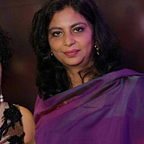Designers- The Mad Knights
Design, as a creative discipline is like no other. It has a history, but no rules. Its concept is amorphous and ever-changing. It stands on the shifting sands of time. In the past, design meant and was generally understood to be the appearance of a thing and how it looked. Then, it became about how a thing works and now, it’s about how it engages with, and impacts society. Also, design may no longer be discerned only in the expression of an idea in terms of its formal qualities, but also in the intelligence and sub-conscious process that manifests such expression. Design therefore, is in ‘how something is done’, in ‘what is done’, in ‘how it works’ and in ‘how it impacts our lives’. It is the method, the medium and the message.
Design education cannot be cast in the same mold as other disciplines. Its objectives are different. Learning through imagination and play, making conscious the sub-conscious and making purposeful and directional, the intelligence- constitute the aims of its pedagogy. Investigating concepts as opposed to learning about them, experimenting with ideas and making productive, the failures, iterating and improving, reflecting upon the successes and failures of all attempts- are essential aspects of design education.
Creative work is interesting. It does not respond to like with like. On the contrary, it begins to think of other possibilities. It works within constraints and yet transcends them. This ability is unique to humans- the ability to speculate, imagine and create beyond what is. In the process, the inert is made dynamic and responsive to the intelligence of the human mind. Creative production, unlike the set and established routines of non-creative production, requires imagination to propel knowledge and the ability to navigate through the dark unknown.
So, how does one learn in the face of the unknown? Design education pitches its mission on this question. Since designers are required to not only be aware of how things ‘are’, but also how they can employ their minds to imagine how things ‘can be’, design education has an epistemological dimension and an ontological one. In other words, in addition to ‘learning by knowing’, student designers must ‘learn by being.’ The ability to function in a climate of ambiguity, to imagine possibilities, to experiment and learn from failures and to have the tenacity to stay the course till the realization of an idea- are the attributes of a designer. These attributes can be cultivated only through the process of doing, encountering, reflecting and circumventing the obstacles. Learning here, is therefore by doing and being. It is by making the leap of imagination that designers come to know what they must know. Much like the mad, self-appointed knight, Don Quixote, who with a head full of romantic ideals, set out to make good the world and rid it of its evil; and who in the end found his reason (but lost his reason to live); designers too, begin with idealistic fervor and learn along the way, about the limitations of imagination intersecting with reality. Their ideas are cut down to size. They gain first-hand insights, which is so much more valuable than receiving second-hand information. They meet much failure, before they meet success. Design, it must be remembered, is an evolutionary process- one that goes from the known to the unknown. Aware that we occupy a space of potentiality, designers through their work navigate uncharted territory and set precedents.
Design education is about culture, not rules. There are no rights, there are no wrongs. There’s no assurance. Nothing is guaranteed. You may not get to the star in the sky, you wanted to arrive at, but by God, you’ll enjoy the journey. And who knows, discover a whole new galaxy along the way.
